The first Lufia game was a pretty standard RPG, although not that bad compared to the games made around the same time. The beginning is the part that stands out the most. It’s a time-worn game cliche that some heroes defeated an enemy long ago, and now the descendants of the heroes have to fight the enemy again. But Lufia actually starts with you playing the strong hero party in the final dungeon against the Four Gods — translated as Sinistrals to get around Nintendo of America’s content policies. At the end of the prologue, Maxim and Selena die in the Gods’ floating island while Artea and Guy escape. Then the main game takes place 90 years later with the descendants fighting the Gods again.
Lufia II focuses on Maxim and his party, so (if you played Lufia 1) you already know the ending of the game. Here we start out with Maxim living in a small village, fighting monsters for money. He has a friend/potential girlfriend Tia who runs the item store. A mysterious woman named Iris appears and tells Maxim he is a destined warrior who will defeat a great evil. Tia joins him and the adventure begins. Lufia 1 players know that by the end of the game he will have met Selena, married her, and had a child, so at least this beginning does provide some unknown direction for the story to travel.
There are some other people that join in the story — not only Tia, but also Hidekker the warrior and Lexas the scientist. They’re only around for a bit, though. The story is OK, though nothing groundbreaking beyond the fact that you know the main characters will die at the end (if you played Lufia 1 — I guess it’s a bigger surprise if you didn’t). Some of the dialogue in the ending is a bit garbled in the translation because they were not able to refer to the Sinistrals as “gods”.
The battle system is fairly standard RPG. The only innovation is the IP system. Many of the weapons and armor have IP skills that you can activate with IP points that you earn by getting hit in battle. Sometimes it’s better to equip weaker equipment that has good IP abilities (like the ones that restore MP or give you 3-5 attacks).
The interface is clean and easy to use, and the walking speed is fast.
Definitely the most distinctive and memorable aspect of this game is the dungeon design and puzzles. Every dungeon is full of puzzles that involve switches, moving platforms, pillars, warp tiles, and other things. You gain a variety of items (arrow, bomb, hookshot, etc.) that help you solve the puzzles. Many of them are optional and lead to treasure chests, and a counter at the end shows how many you found. You can even try the “hardest puzzle in the world” at one point.
The first time I had to consult a walkthrough, it was for a puzzle that had a bunch of routes in a room that all led to warps, but one was a door. The door is shut, and there’s no clues for what to do. I looked at a GameFAQs walkthrough and didn’t see any mention of it. Finally I consulted a Japanese walkthrough and found out this was based on Amidakuji, which I’ve heard of but didn’t know it well enough to recognize the puzzle.
It turns out the puzzle was removed in the English version, but rather than simply making the door open they replaced it with new puzzles having to do with colored blocks — an impressive effort by the localization team. There was one other puzzle replaced in the English version:
The room starts out with the black squares forming an X and you have to change it so the O is black instead. Japanese people have a much stronger association with “X = wrong, O = correct” than we do, and the localizers must have felt that with no hints, this would be impossible to solve. For this one they just removed the puzzle and left an empty room.
For the most part I found the puzzles fair and well-designed; even the few times I had to consult a walkthrough I felt that I should have been able to work the solution out on my own. There is a pretty wide variety as well, and they’re always sure to throw in an easy puzzle or two in every dungeon so you don’t always feel like you’re banging your head against the wall.
Also the designers made the excellent decision to eschew random encounters (except on the world map) and replace them with monsters on the map. This reduces a lot of potential frustration.
The game also has “capsule monsters”. You find them at various points in the game and then can feed them various weapons and items to grow them into different forms. You don’t control them in battle. I found this was the weakest part of the system — especially once you get a bunch of them, growing them just involves visiting different shops (or going to Forfeit Island) and buying items to feed them. It’s repetitive and boring; I gave up once I got them to their third forms.
Finally, there is a good amount of optional content in the game. Not just finding all the chests, but there’s also a casino, and the Ancient Dungeon. This is a 99 floor dungeon that works like a Torneko/roguelike game. You can’t bring in most items and you’ll lose most of what you have when you leave, although there are some blue chests in the dungeon that have good items you can take out. You can easily spend more time on this than the entire main quest. There are also Dragon Eggs you can find throughout the world which you can trade in for bonuses.
I missed 42 chests so I could have done a lot more.
But overall this is a great game; it’s one of the best I’ve played so far on the blog and it’s well worth all the hype it gets.
Next up will be a SRPG (Nage Libre) which was released the same day as Lufia II. I’ll be covering it on the other blog.
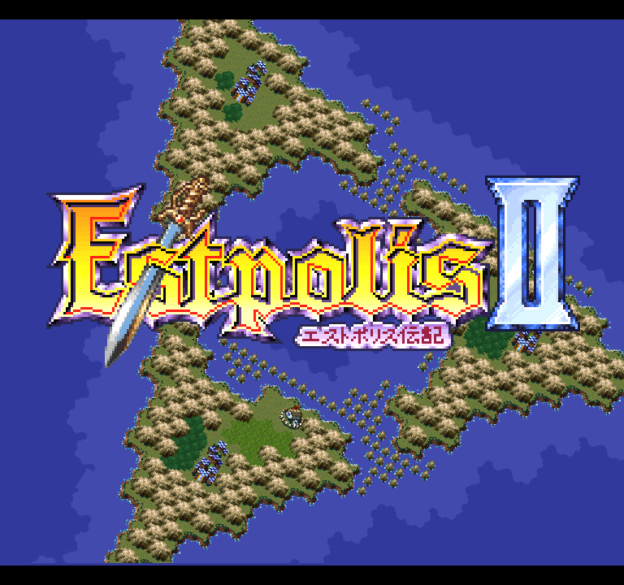
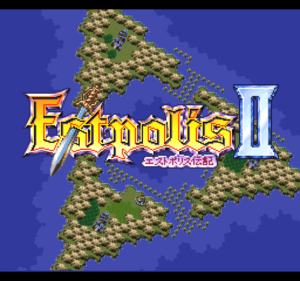
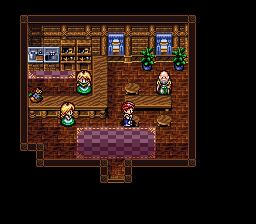
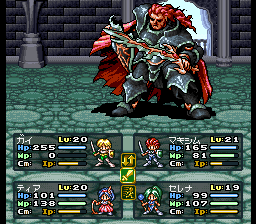
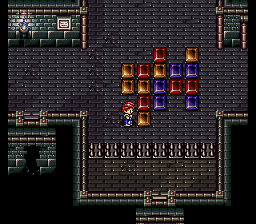
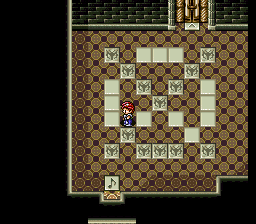

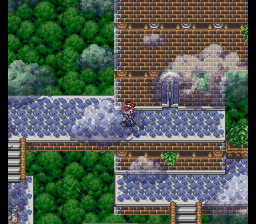
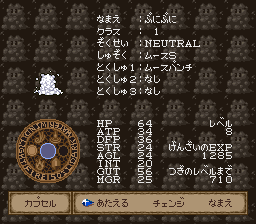
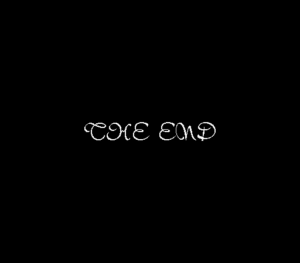
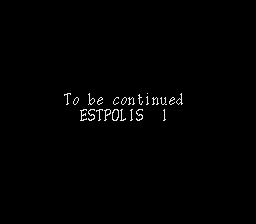
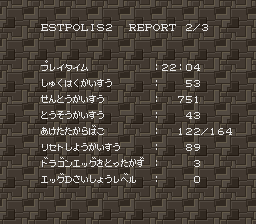
Hi, i just discovered this blog as I am also trying to get into the snes rpg library. This is a great blog for me to pick games, though I'll try my best to avoid spoilers XD. I liked how you being harsh about your review and thus trim all the bad ones for me because they are so many, and when you said something is good, then its gotta be real good for you to say so.
This is a quite good game for the system and the time it was released, but every time I've played it always left me with the same impression: that the game is extremely linear up to when you get the ship. Every time I've played it it's always been the same loop "arriving to a new town, having to do something in a cave/tower/mountain near that town, going back to the town fixing the issue, going through a passage to the next town, rinse and repeat". I should play it again because a few months after playing it I always end up wondering if it really is that linear or it just gives me that impression.
It's not a bad game at all, though, and does one of these things I like in rpgs letting you get a aubmarine and explore an undersea version of the world map.
going back to the town fixing the issue, <—- sorry, I meant "after fixing the issue". I should get use to review what I write before hitting the send button.
It's definitely as linear as you say.